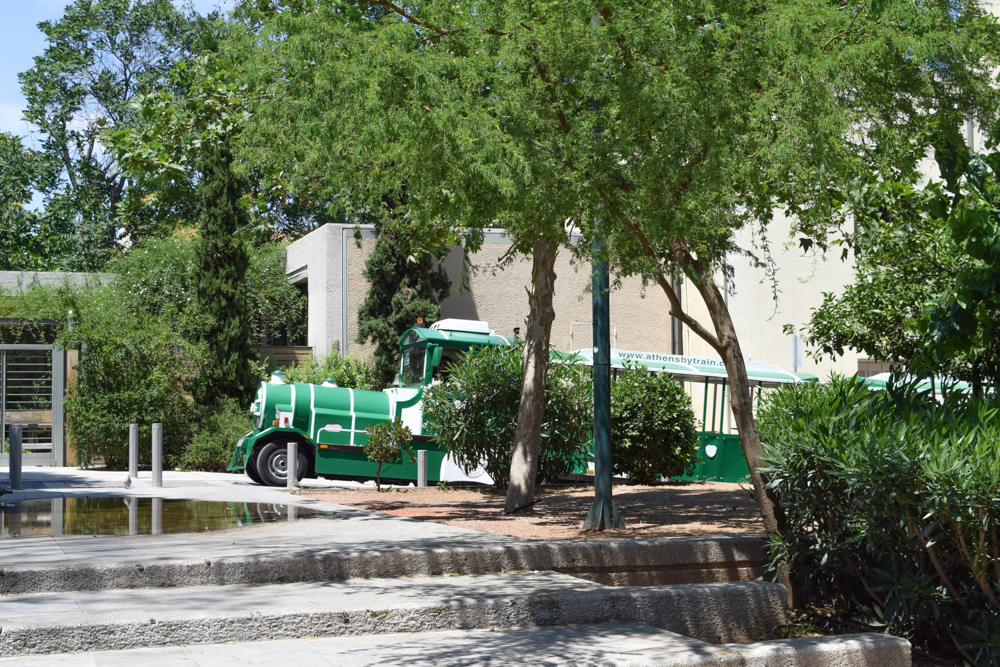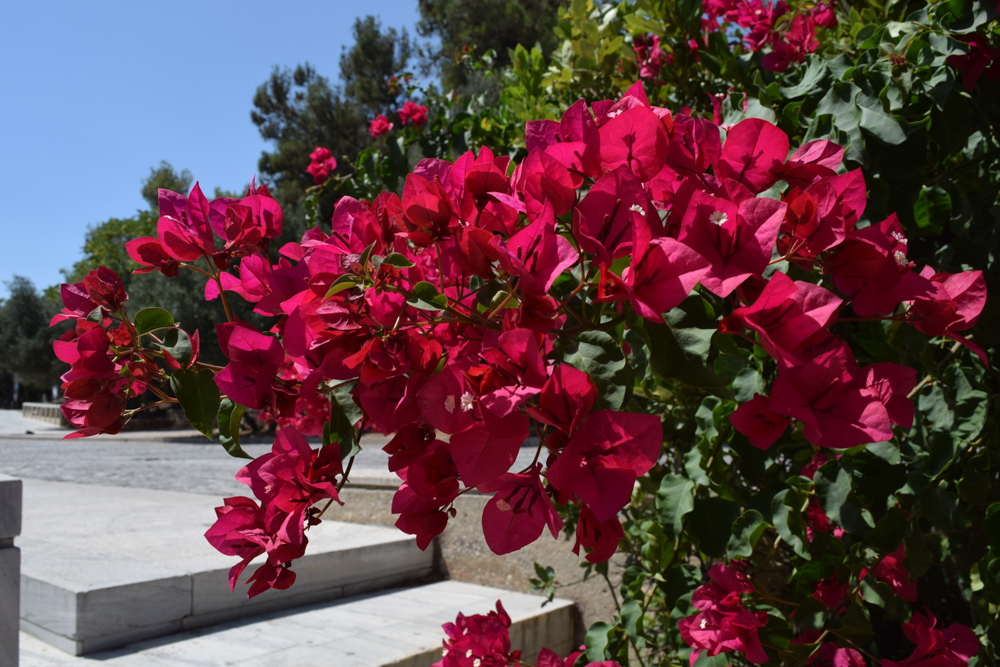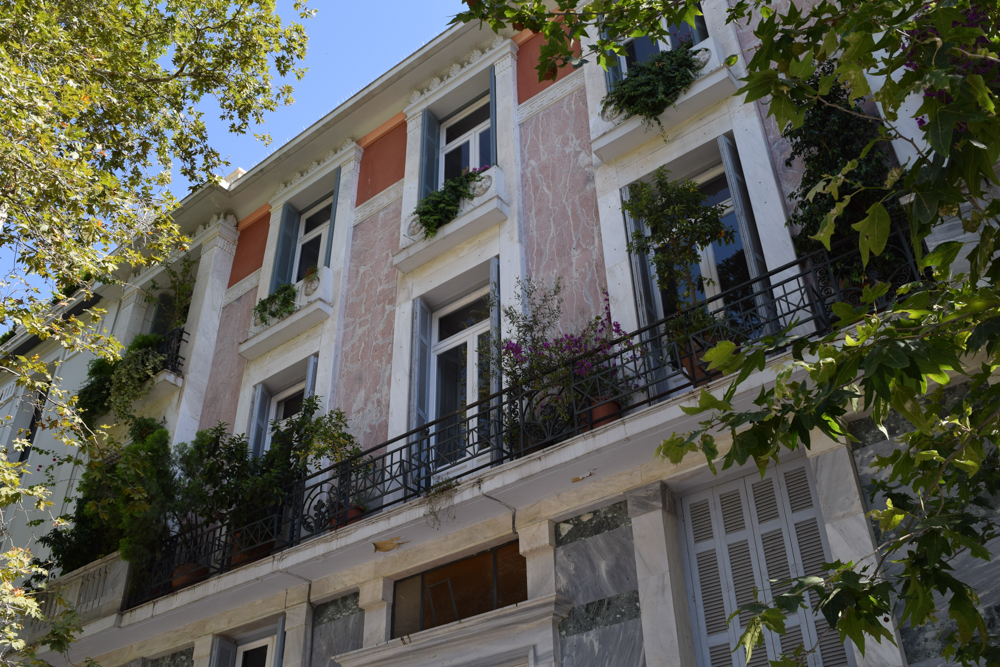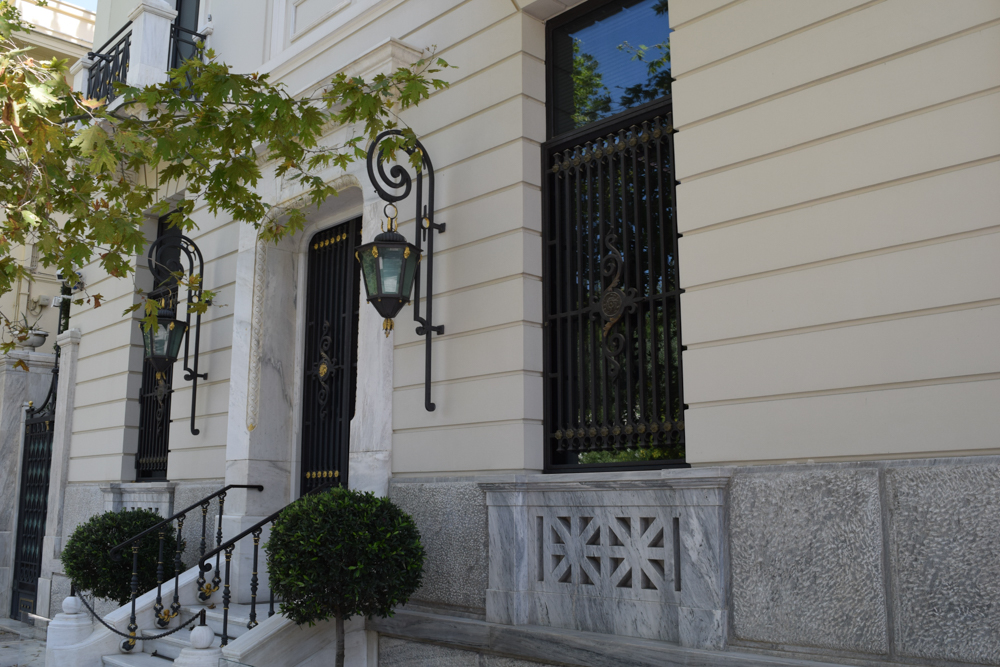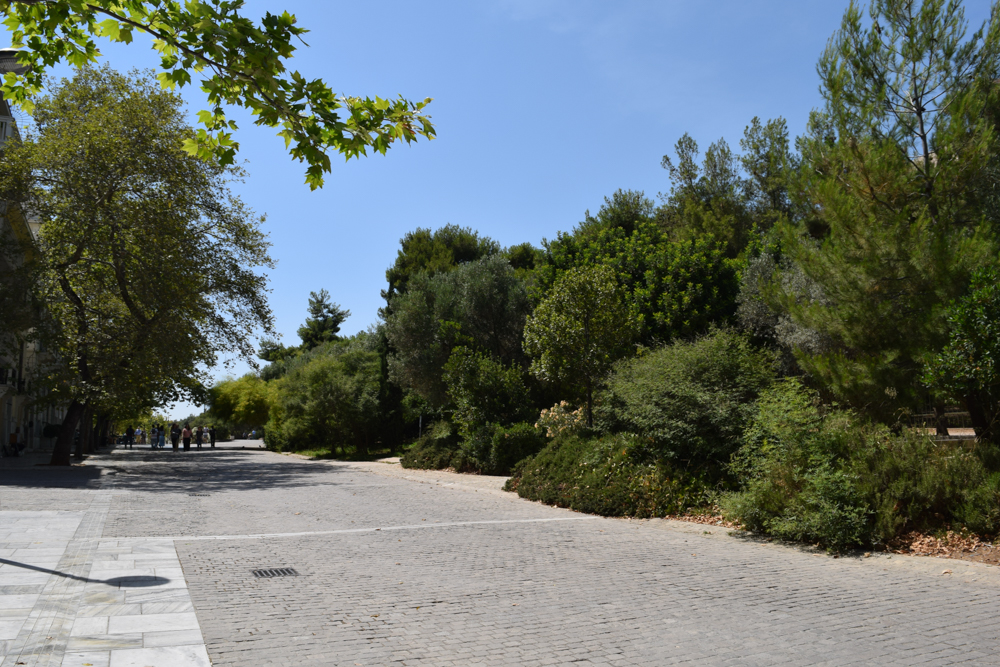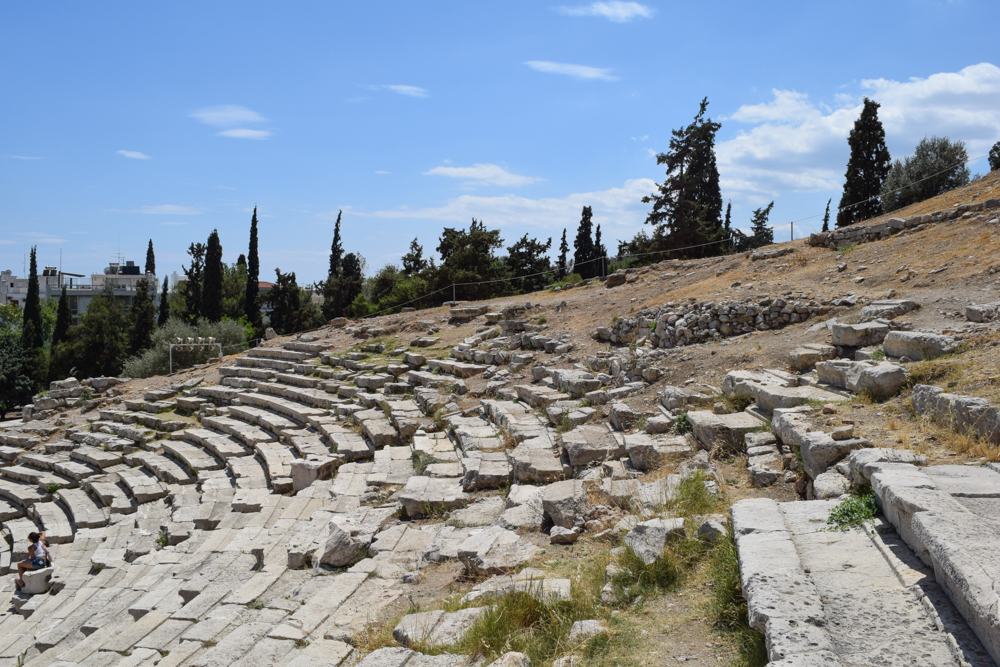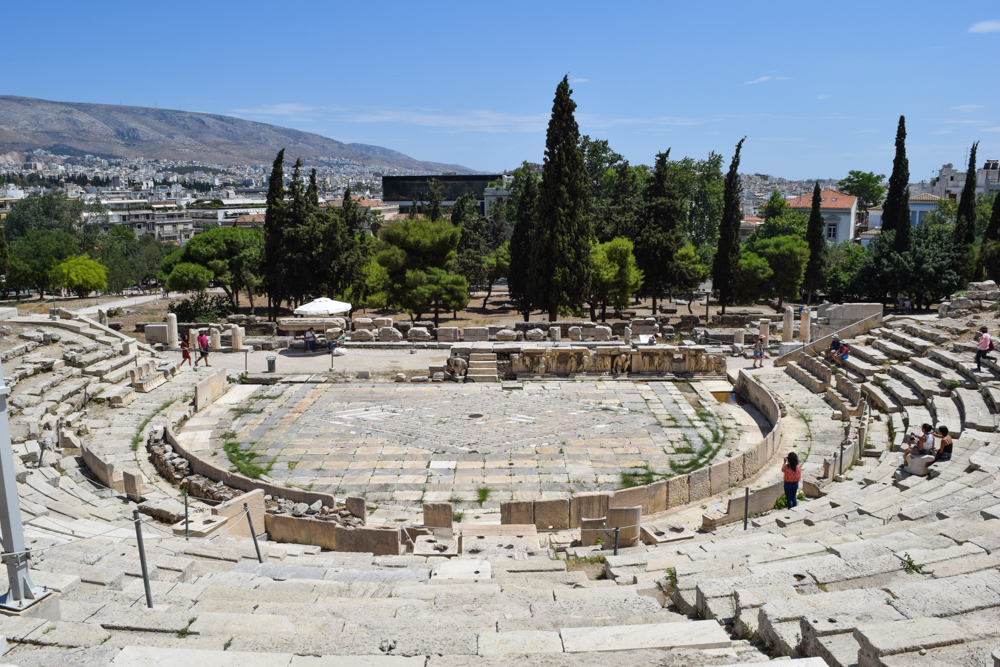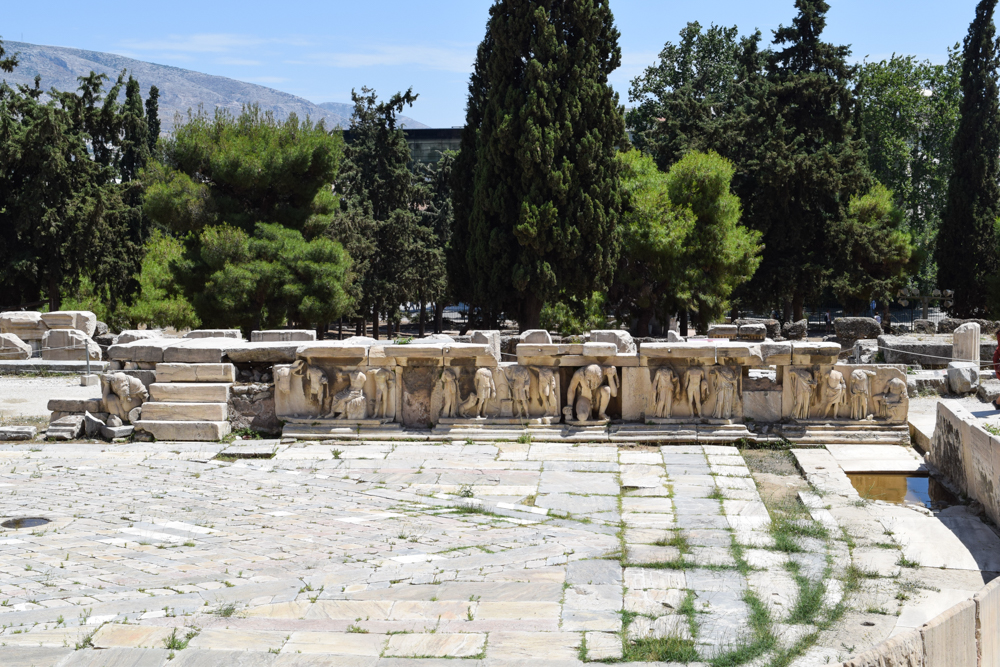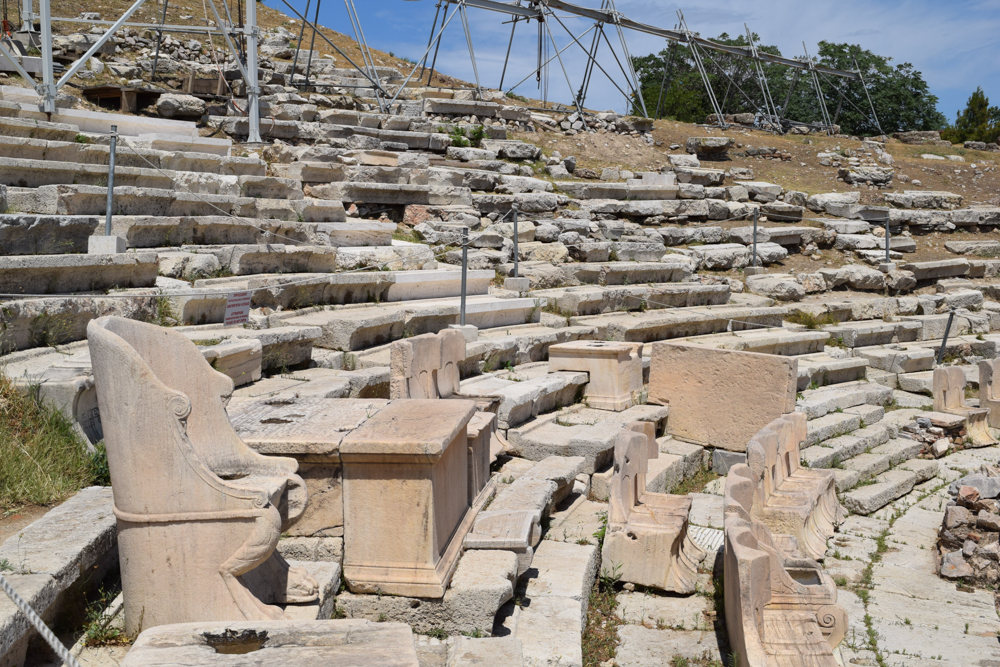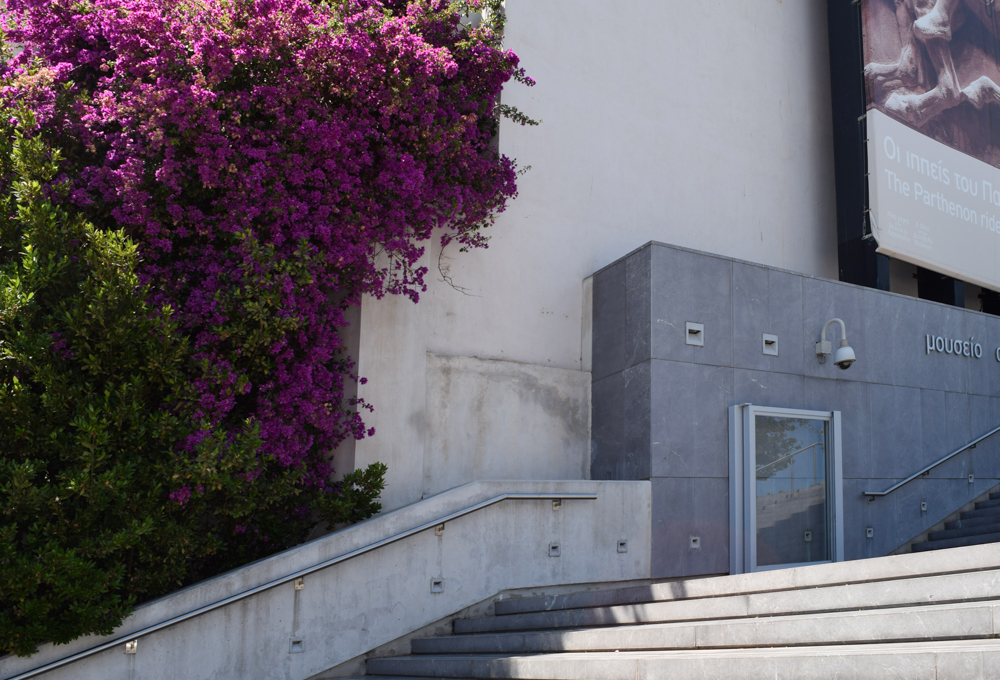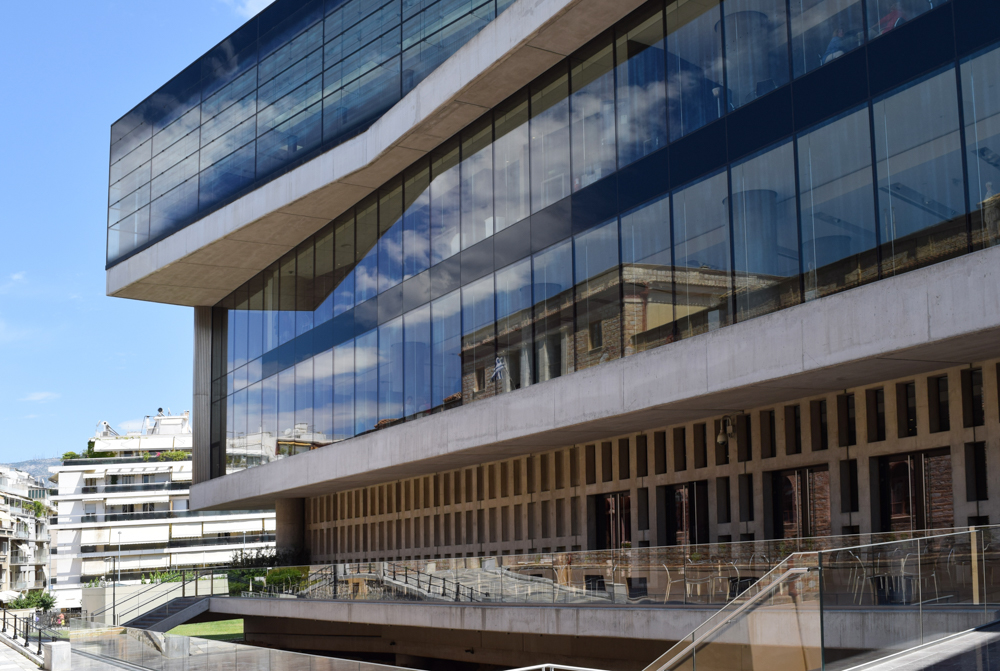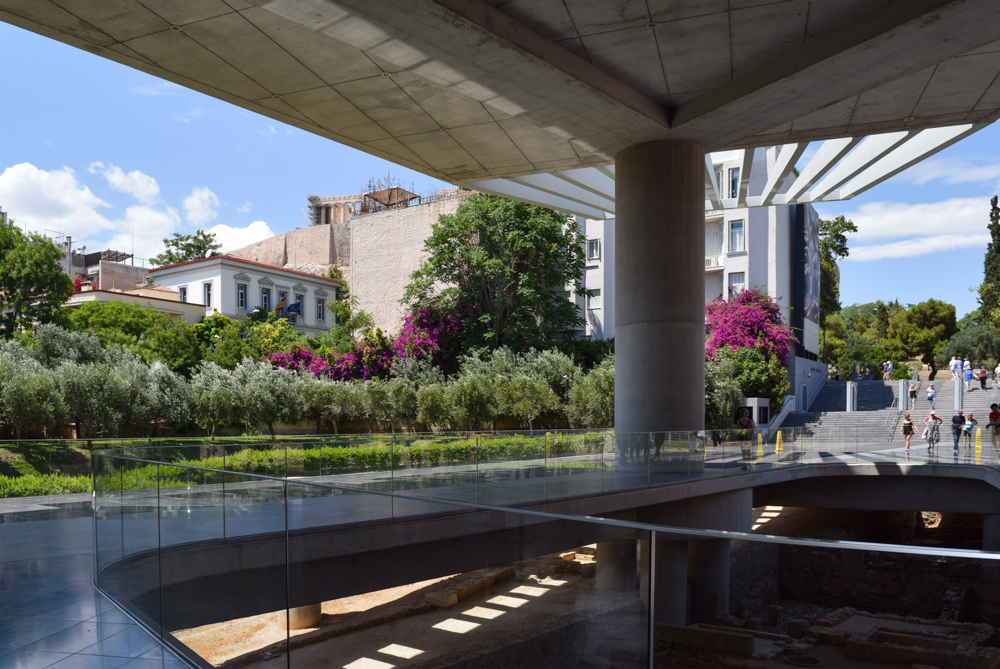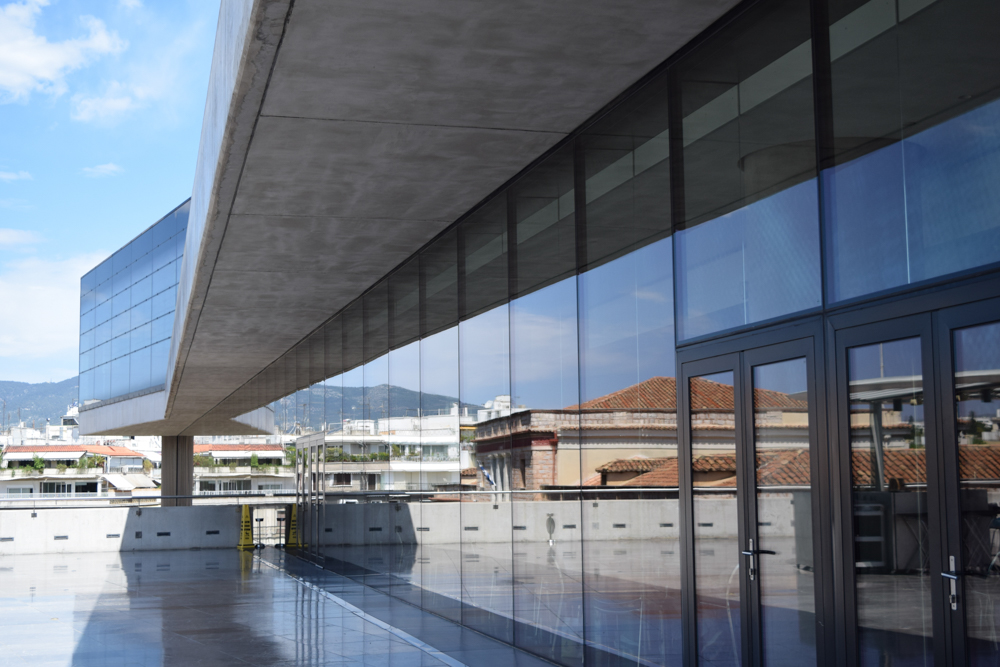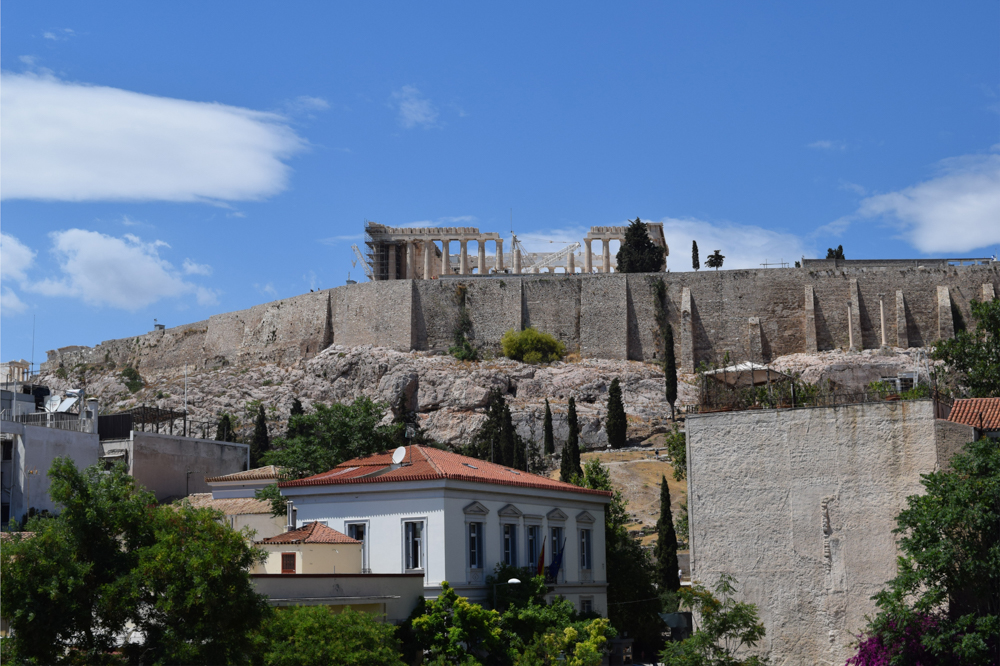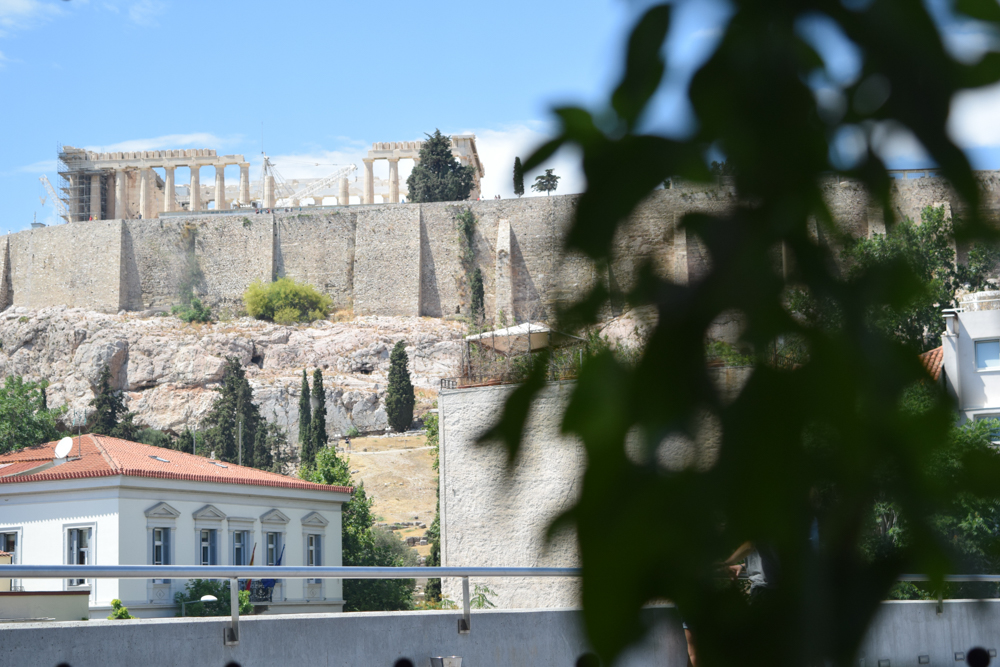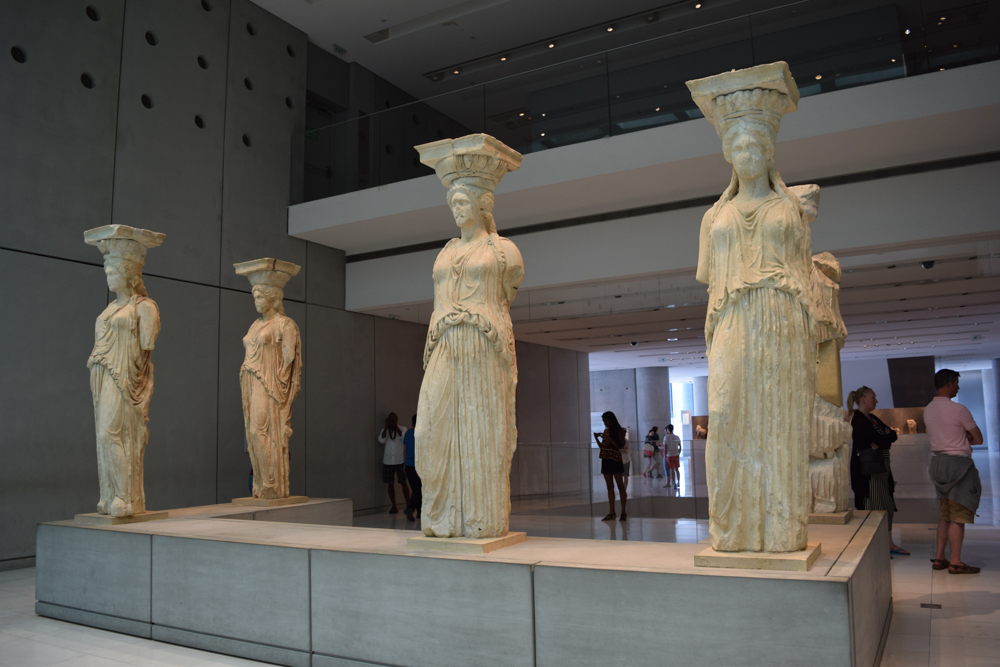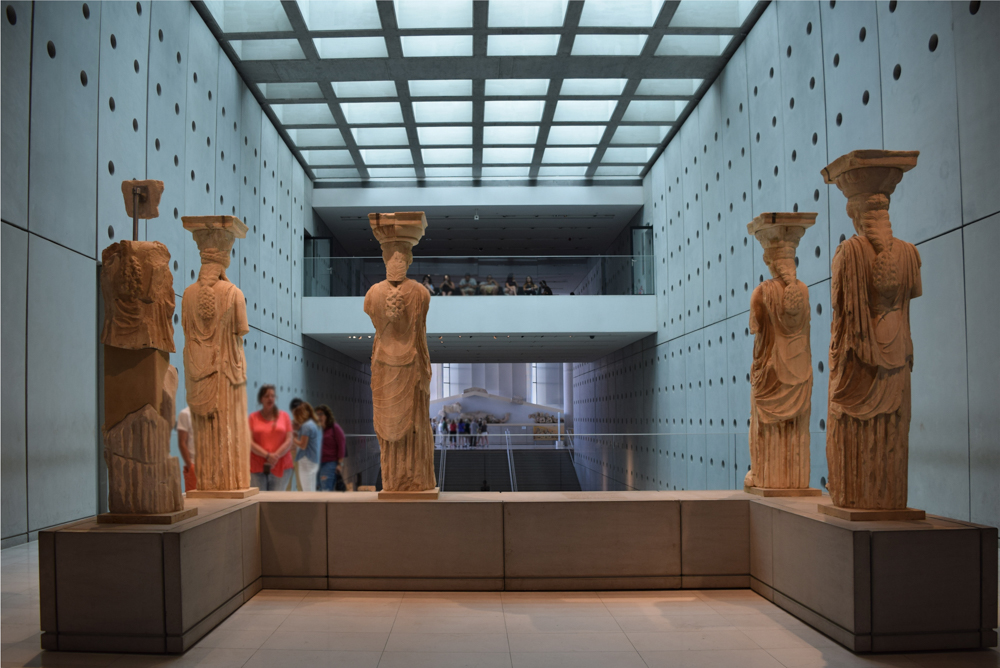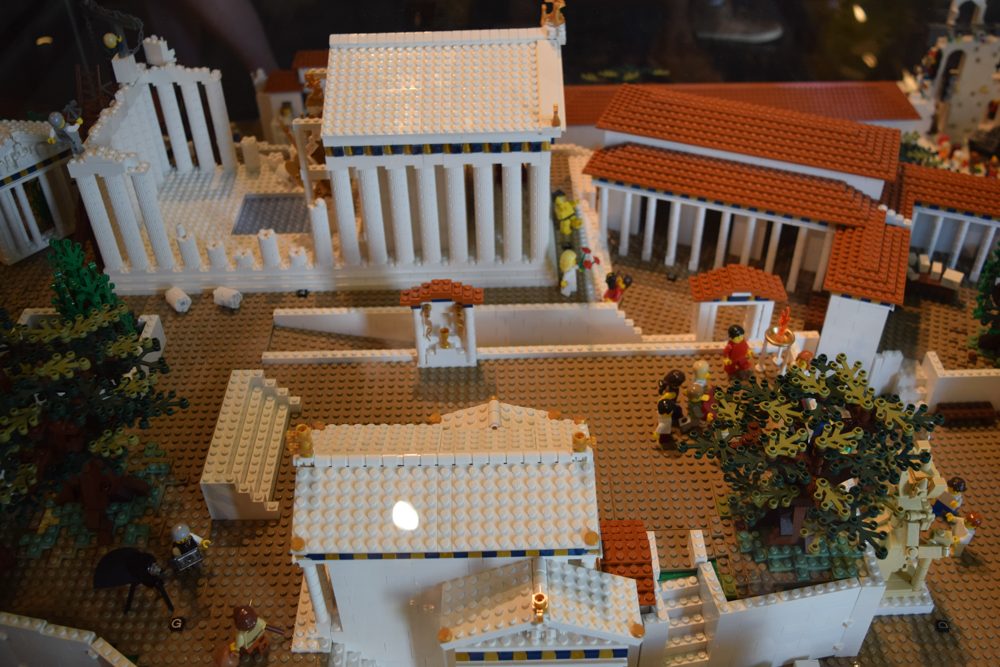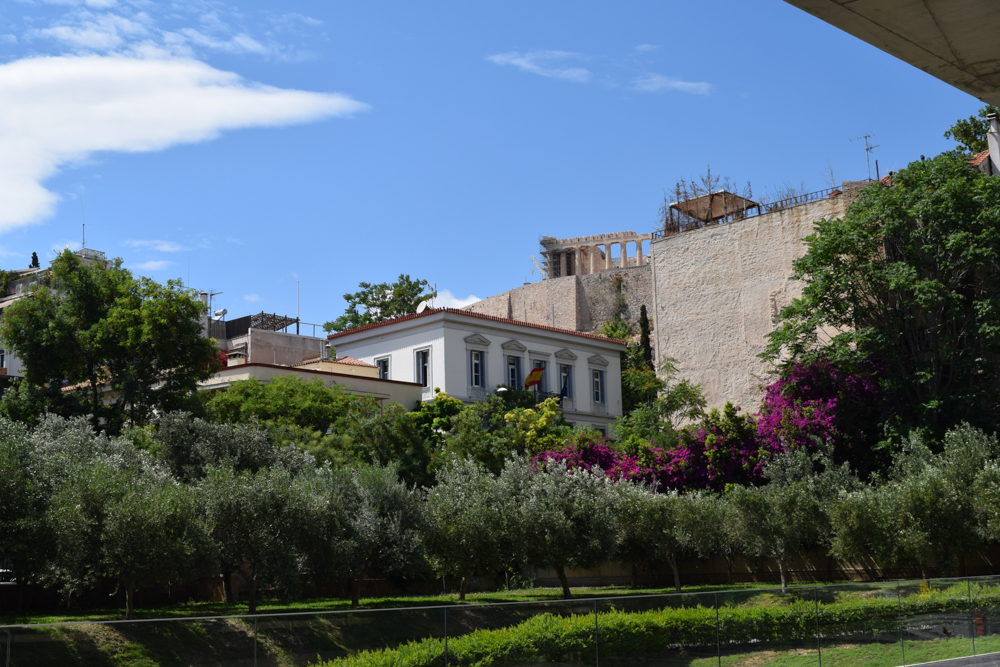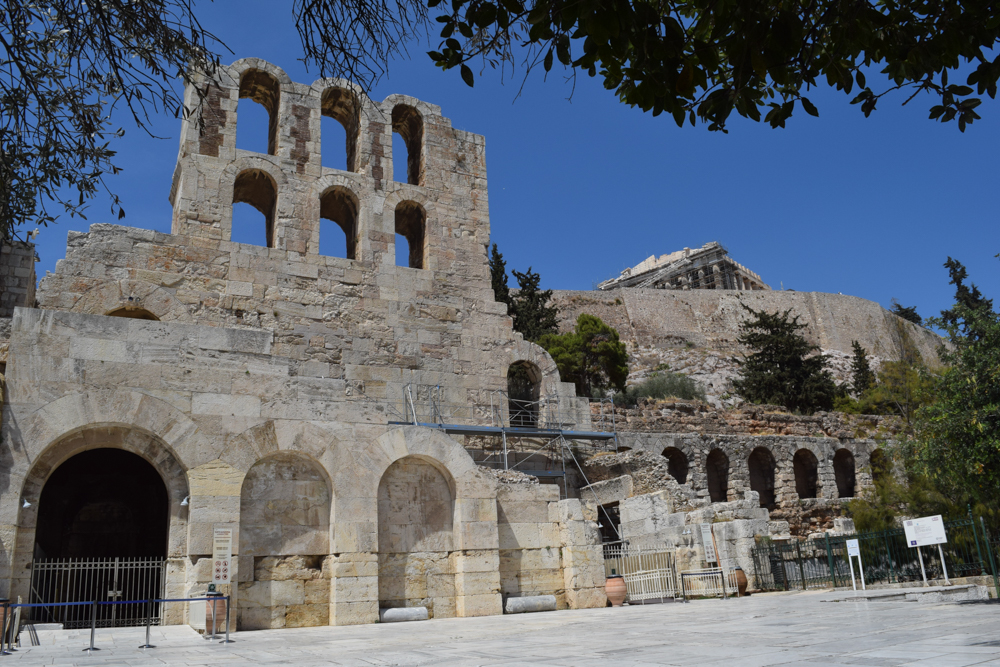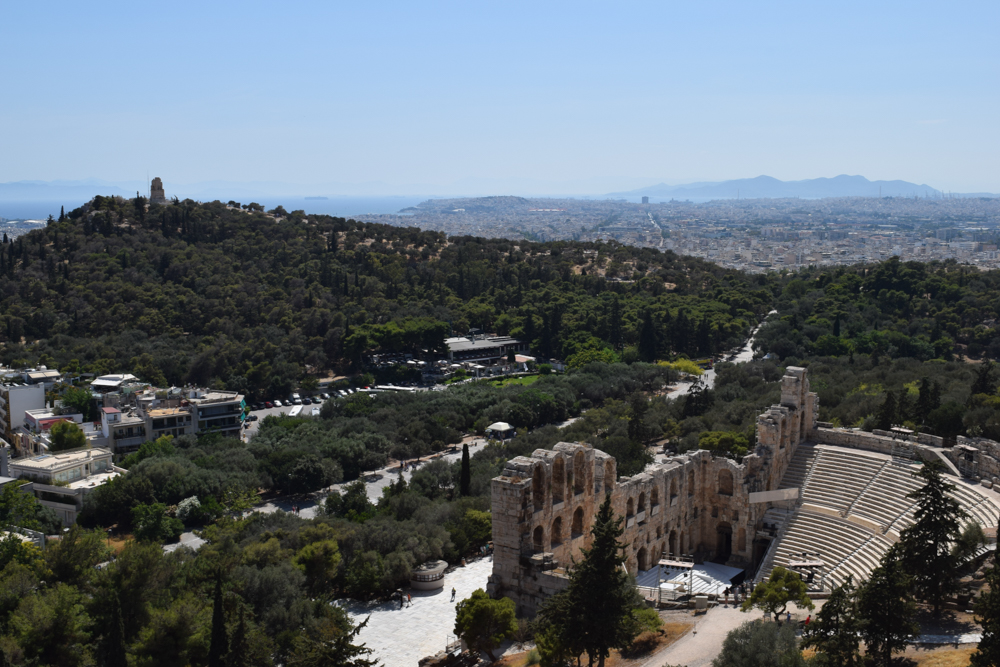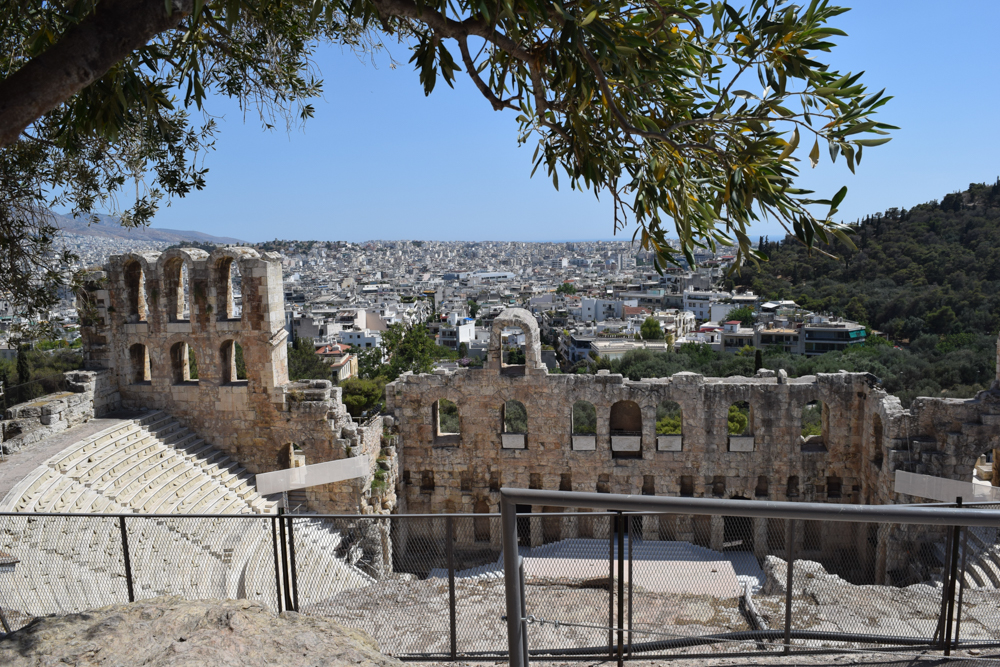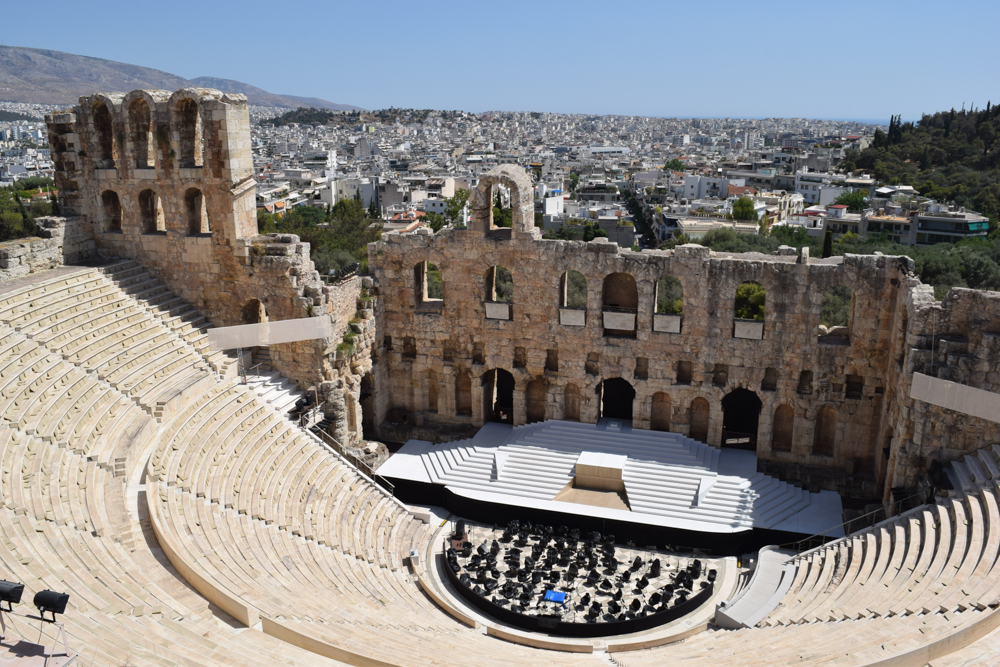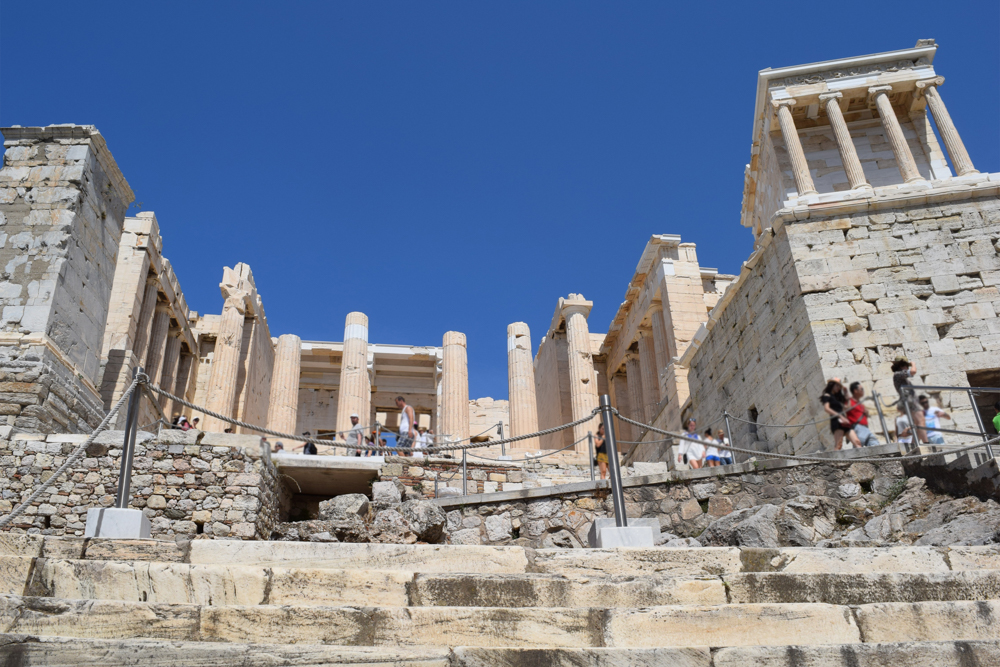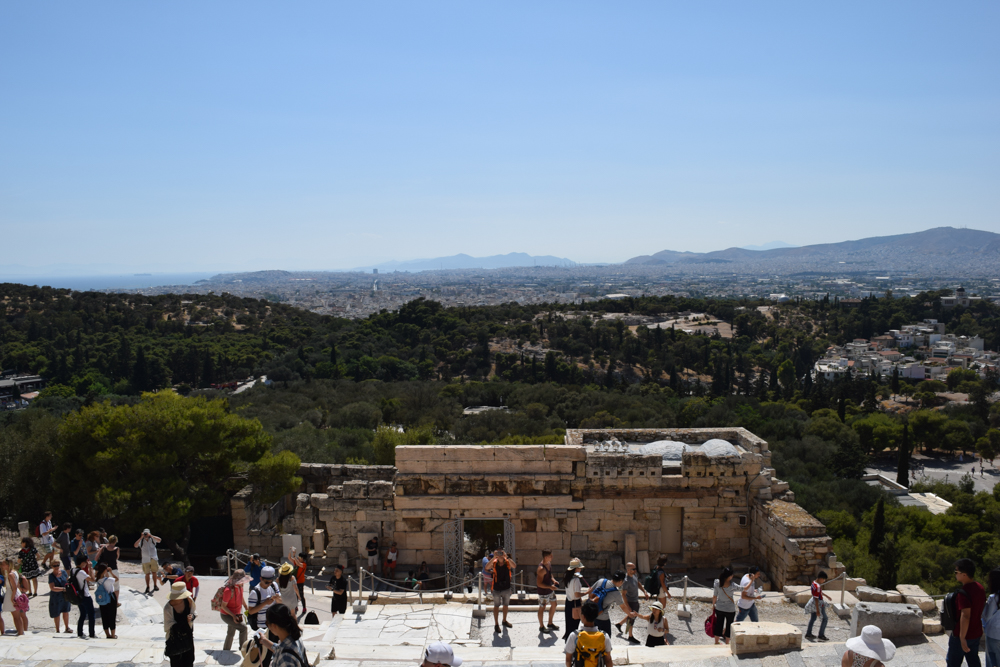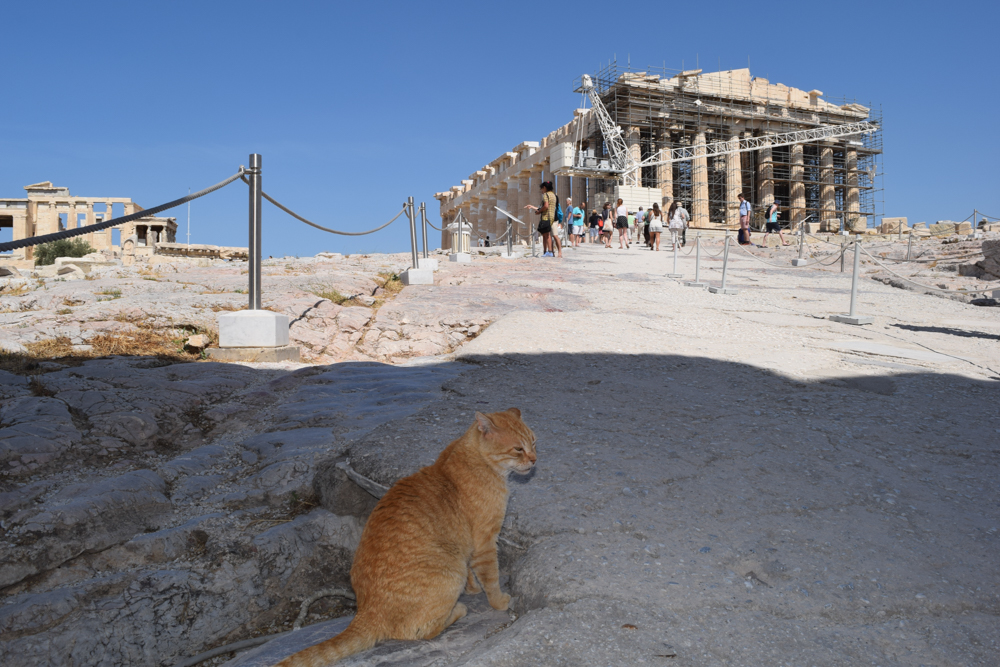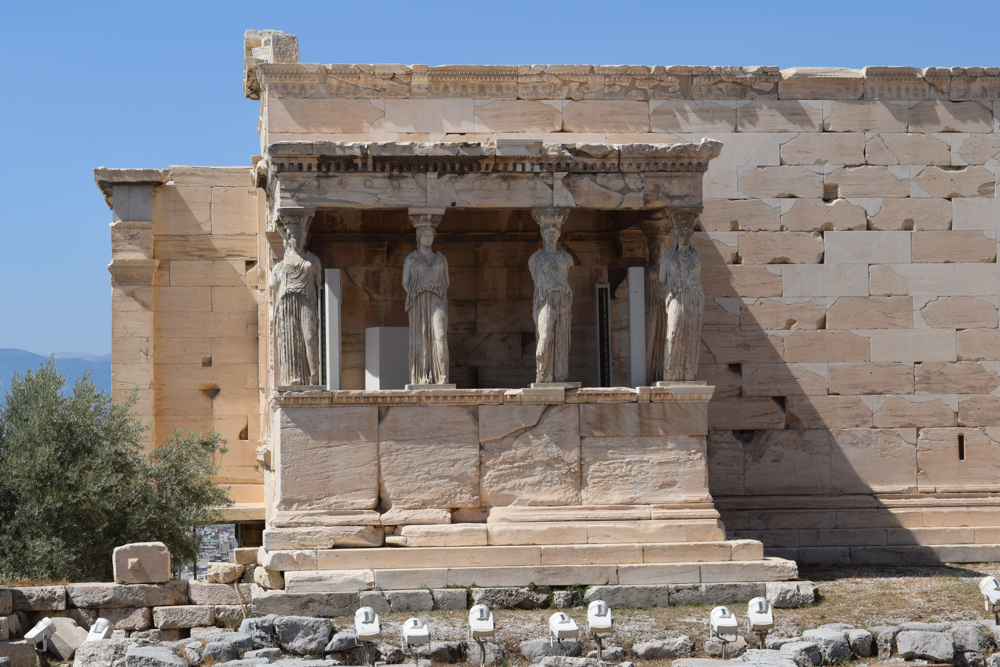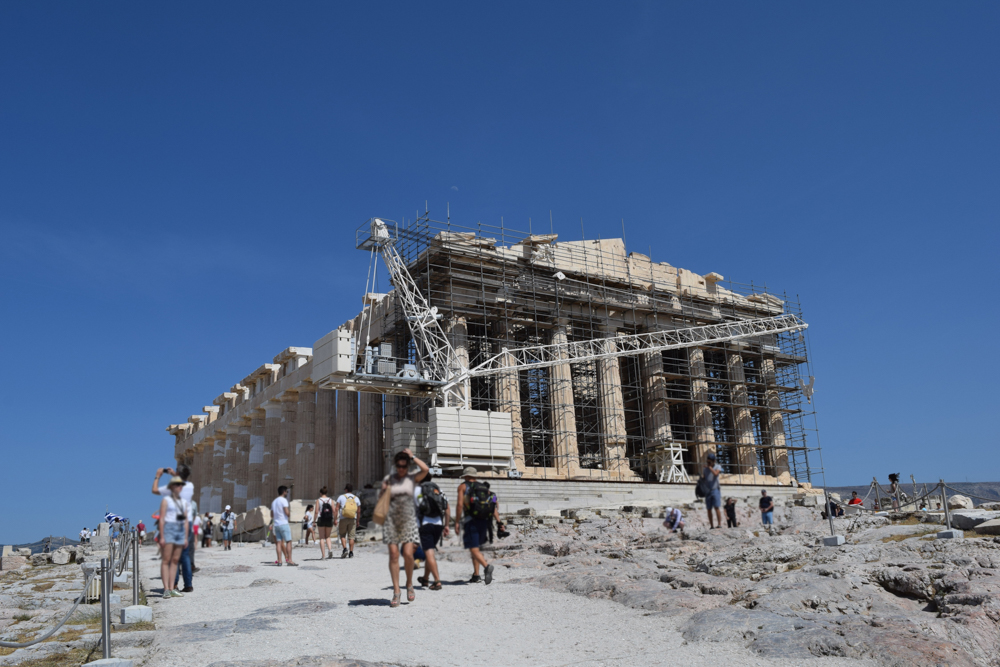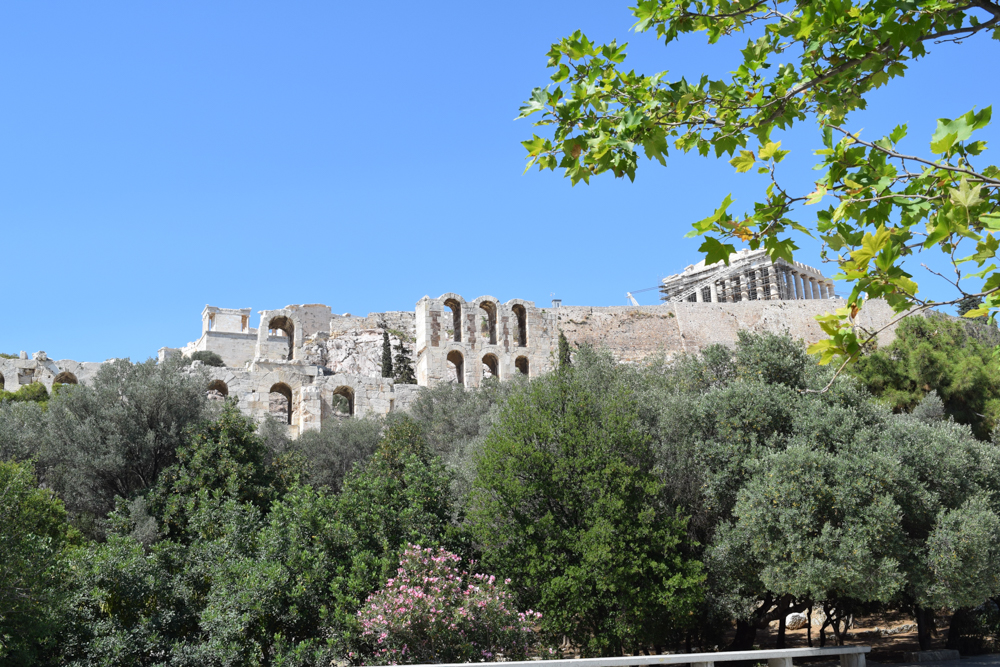
The Athenian Girl at Dionysiou Areopagitou.
When I was studying architecture in Rome and friends were visiting me, I was proud to be their walking guide in the streets and alleys of the Eternal City. It was my pleasure to make them see the city through my eyes.
After my graduation, I moved back to Athens. Even though I knew the history of architecture of my city very well, I realized I had never been a tourist in my own city. I could not create any touring plans if a friend of mine wanted to visit Athens. Since I knew Rome by heart, someone would expect from me to know Athens as well.
However, since then, that gap has been filled.
Starting from this blog post, I will to cover some very basic walking tours of Athens.
If someone asks me, what’s the first thing he should do in Athens, that would be a walk through Dionysiou Areopagitou. It’s the longest walkaway of Athens in Makrygianni area.
Pedestrian street Dionysiou Areopagitou is the perfect place to start your Athenian journey. It will travel you back to ancient Athens since it connects the most significant archaeological sites.
So this beautiful walk starts just opposite the Temple of Olympian Zeus and Arch of Hadrian from Amalias Avenue.
Since it is a big street, you will have the time to leisure around, cycle, and take a coffee or have a snack. Most importantly you will feel like you are in a different era. (Well, somehow you are).
On this walking tour, you will have the opportunity to visit some of the most significant landmarks of the ancient world.
The Theatre of Dionysus
This theatre, is dedicated to Dionysus, and was built about 530 BC. It was the birthplace of Greek tragedy.
Tragedy playwrights, such as Aeschylus, Euripides and Sophocles, wrote the plays that had been first performed here. Their plays that have been survived until nowadays, (not too many), are being studied worldwide. The seating capacity was approximately 16.000.
The New Acropolis Museum
The museum was built to house every artifact found on the Acropolis and the surrounding slopes. The most important galleries of the museum are the Parthenon Gallery and the main monuments that constitute the classical Acropolis. That is the Propylaea, the Athena Nike and the Erechtheion.
The Odeon of Herodes Atticus
The Odeon of Herodes Atticus lies on the southern slope of the Acropolis hill and since its restoration, it has been the main venue of the Athens Art Festival (that is being held yearly, from May to October), featuring concerts and performances, with a marvellous acoustic experience by a variety of distinguished Greeks and International performers.
The Areopagus, or Hill of Ares
The Areopagus was the place where the elders of the city held their council. Now you can enjoy a stunning view across the Acropolis, Athens, the Agora, the Philopappos Hill and the surroundings.
… And of course…
The Acropolis
The Acropolis is the landmark of Athens. It is one of the greatest architectural complexes that the Greek Antiquity has offered to the world. It was built around 450 BC, during the Golden Age, under the ambitious project of statesman Pericles that generated most of the surviving structures on the Acropolis. Through the guidance of the Sculptor Phidias, they transformed this rocky hill into a unique monument.
Propylaea is the monumental gate to the Acropolis. It was built by Architect Mnesikles. South of the Propylaea, lies the temple of Athena Nike.
Another great monument is the Erechtheion. They say that it was built to honour the king Erechtheus. On the north side of the Erechtheion, lies the porch of the Caryatids, which consists of six female figures, Caryatids, as supporting columns.
The most famous monument is the Parthenon. Parthenon’s main function was to house the approximately 10 meters Chryselephantine sculpture of Athena, the patroness of Athens. The creator was sculptor Phidias and it was situated in the south end of the cella. Unfortunately, it has not survived until nowadays.
The Ionic frieze is a Pentelic marble sculpture that was running around the upper part of the exterior wall of the cella. It was depicting the Panathenaic procession, the biggest religious festival of Athens.
The east pediment of the Ionic frieze narrates the birth of Athena. The west pediment, depicts the contest between Athena and Poseidon, during their competition for the honour of becoming the city’s patron.
The Architects of this legendary monument were Iktinos and Callicrates.
There are some interesting theories, saying that they constructed it according to the golden ratio. Or that there is an optical illusion of parallelism between the entasis (slight swelling) in the centre of the columns. Unfortunately, those theories are not confirmed, although some affirmative conditionals make a positive assertion.
It is also worth mentioning that until 1687 the Parthenon was mostly intact. Parthenon also carries a reputation of being “the most perfect Doric temple ever built”.
All monuments of the Acropolis were constructed entirely of marble from Mount Penteliko (Pentelic marble).
Some tips about this walking tour:
- Please keep in mind that some parts of the Acropolis may be slippery enough. You have to pay some attention by wearing suitable shoes.
- If the weather is hot, always provide water with you.
- Admission fees apply to all archeological sites.
- Dionysiou Areopagitou, is easily reachable by the metro station “Acropolis”(Red line).
- Apart of the ancient treasures that this street is combining, I am also always dawdling the beautiful neoclassical buildings of the street.
- Whenever you feel tired, you can have a rest.

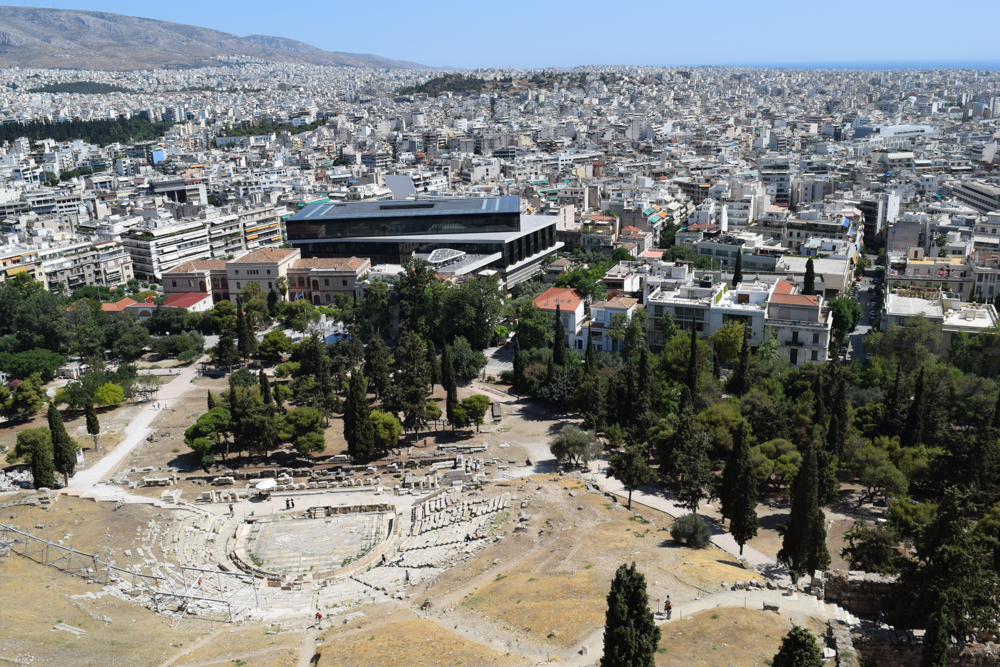
The area offers numerous coffee places and traditional taverns.
You can enjoy the panoramic view of the Acropolis at the Cafe & Restaurant of the Acropolis Museum while having a coffee, a light snack or a hot dish.
You can enjoy excellent Greek cuisine in the lounge area or at the roof garden (with a marvellous view) of Attikos Greek House.
Strofi is also a great choice for Greek and Mediterranean cuisine under the exceptional view towards the Acropolis.
For a Greek fusion cuisine, try Trapezaria.
MANHMANH is also an excellent choice for Greek cuisine.
The AthensWas Boutique Hotel offers stunning views of the Acropolis, at the Modern Rooftop Dining.
Later in the evening, or at night, the area offers wonderful choices as well:
Tiki Athens is an exotic bar that is a great choice for cocktails and for their famous Tiki burger. They often host events and theatrical performances.
If you love wine, try the Wine Point bar to taste Greek wine labels at great prices.
For Jazz lovers, you can visit the atmospheric Palio Radiofono bar.
“Fly me to the moon and let me play among the stars”
Until next time! ♥

